Review: Nanoparticles
Score:
78%
Calling all particle physicists, today's game is especially for you! Nanoparticles is a game that takes the laws of physics and tweaks them for the pleasure of picoscopic particle perturbation! [Oh, come onnnnn - Ed] All that's needed is a keen eye and quick reflexes. It's your Symbian phone that will be taking care of the mind bending mathematics needed to diligently trace out the dynamic trajectories!
Version Reviewed: 1.0.0
For anyone with even a passing interest in physics, Nanoparticles is worth taking a look at. In fact, if you're a student, and you own a Symbian device, then you really should see this, and let all those complicated formulas come to life!
The author of Nanoparticles says that he is using the Biot-Savart law and Euler-Cromer method to create the game engine. Albeit tweaked for entertainment purposes! Before you run away, allow me to use my own physics background to translate, and explain why this is so interesting. The Bio-Savart law is what we use to calculate the magnetic field created by an electrical current. You see, Nanoparticles simulates charged particles flying around, each creating creating their own current, and so creating a magnetic field which will deflect neighbouring particles. Together they create a gloriously chaotic feedback loop of swaying particles. The Euler-Cromer method is, in layman's terms, a way of calculating the energy of each particle, which gives their paths and accelerations.
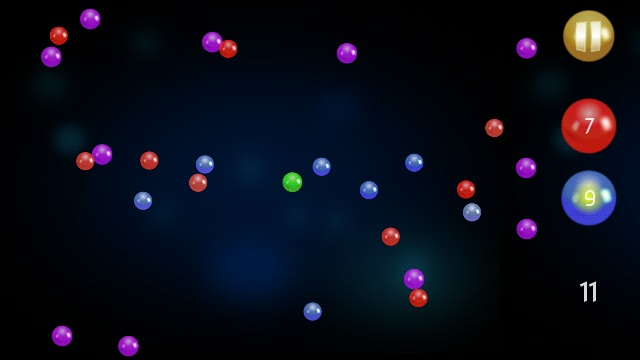
The particle soup
The point of taking you to science class is to share an appreciation of the computational work your phone is capable of. Each level in Nanoparticles has more and more particles, all influencing each other, and yet still being animated smoothly. We can too easily take for granted what our smartphones are capable of doing. Having worked in computational physics, I think Nanoparticles is a great demonstration of the raw computational power we all carry in power pockets.
Onto the game play …
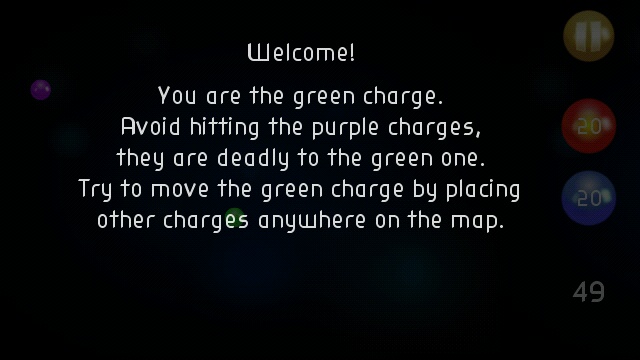
Straightforward help screens tell you how to play
The object of the game is to protect your solitary green particle. Each level has numerous purple particles that will attract and destroy the green particle. In Nanoparticles it seems that green and purple are anti-particles. Don't worry though, your phone won't be annihilated when they touch! You're playing against the clock too. If your green particle is still safe when the timer gets to zero, you advance to the next level.
You have to control the green particle, keeping it away from the purples. You do this by placing red and blue particles, of which there are a limited number. The reds repel the green, and the blues attract it. To complicate things, every particle moves, not just the green. Blue and reds repel like particles, while the the green is attracted by the blues and purples.
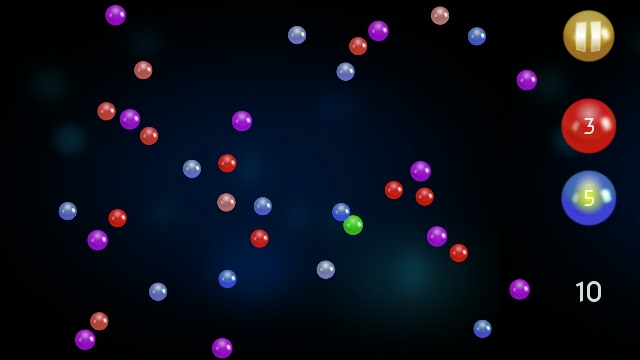
Trying to neutralise the purples!
To confound things even more, every time the green particle hits one of the blues, its charge grows stronger, which makes it harder to control. This is indicated by a slight change in colour over time. Similarly, I noticed that, as the reds and blues collide, their colour changes toward grey, which I presume means that their charge has been diminished.
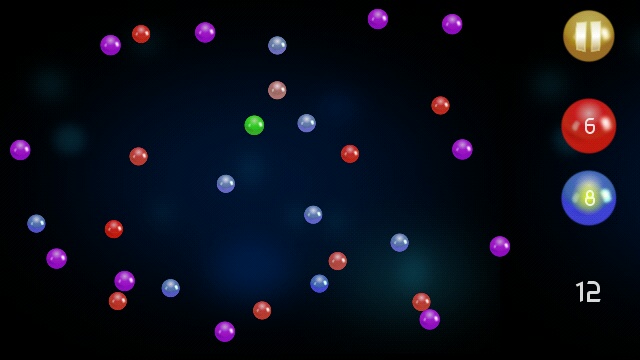
Corralling the precious green particle
The most engaging part of the gameplay in Nanoparticles is experimenting with different tactics. In testing, I've come up with two approaches. Play reactively, or try to quickly lay down a set pattern before the green particle gets into trouble. Unless my gaming reactions are past their best (entirely possible), Nanoparticles runs too fast to play on a purely reactionary basis. If you're lucky enough to create something resembling an equilibrium state, you can then set out your remaining particles in a reactionary manner.
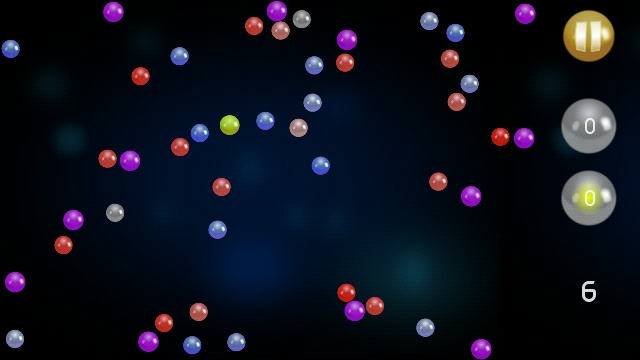
Green particle turning yellow, meanwhile reds and blues are being neutralised
Another way of approaching the game is to be delicate, by placing as few particles as possible. Every particle added introduces more energy into the system, which increases the entropy and chaos. Inevitably, everything will go faster, making control even harder. You can see from the screenshots that I preferred the “throw in as many particles as possible” school of thought!
Nanoparticles is not a relaxing game, but equally so it's an engaging game. It really does get the blood pumping, especially when everything seems slow and calm, then all of a sudden all the potential energy rapidly converts into kinetic energy; often, game over then quickly follows! However, because of the unpredictability and scalability possible with Nanoparticles, it has longevity. In as much as there will always be a level that takes you a long time to complete, if at all!
Nanoparticles is in the Ovi Store for £1.00. I managed to get as far as level 15. Let me know in the comments how far you get!
Highly recommended.
David Gilson for All About Symbian, 17th June 2011.
Reviewed by David Gilson at
